by Makarand Paranjape
God incarnate or mere Godman?
The mission statement
To usher in the Satyaguru, the Golden Age, nationally and globally, through a micro-level transformation of consciousness in the psyche of the individual, effected through intimate personal discovery
More >>
The Kalki convenant
I am…the Supreme Creator, the Supremely Sacred, the Supreme immanent inner Controller of all that is, the immortal-I am Ishavara… With my coming, it is the dawn of the Golden Age More >>

Satyalok, Andhra Pradesh. About 140 km from Bangalore, in a small commune deep in the
heart of rural India, a strange, thrilling, disturbing and moving phenomenon is erupting. Right before our eyes, a new religion, or at any rate a new cult, is emerging, complete with a living
God, a monastic order, millions of thronging devotees, and tales of miracles.
The divine center of the phenomenon is a 48-year-old being of slender build, who has been proclaimed as the
Kalki avatar. The
moolamantra, or the principle chant of his cult, celebrates him as "
satchidananda parabrahman, purushottama paramatman"—the embodiment of truth-consciousness-bliss, the Supreme Godhead, Perfect Person, Transcendent Self.
After remaining incognito for over three years,
Kalki Bhagavan has now made himself available for public
darshan, divine glimpse, at
Satyalok.
Ten a.m. In a small room, he sits on a raised platform in a modest chair draped with a silk cloth. His beard is trimmed, his head covered with a white flowing cloth. he has a garland around his neck. Above him is an umbrella whose shadow envelops him like a hole. A stairway covered with a blue carpet leads up to his platform.
Underneath, two
acharyas, the shaven-headed and white-robed Acharya Vimala Kirit and the Paramacharya, an older, more impressive bearded man, stand at attention. The Paramacharya has just conducted an
aarti, the
ritual waving of a camphor flame, to the figure on the chair, signaling the end of a
puja, ritualistic prayer. Both men prostrate themselves full length.
And then the
darshan begins.
Separated from this room by a glass partition is an even smaller
darshan hall. From one side devotees pour in, men and women of all ages and classes, who have waited hours for a glimpse of their
Lord Kalki. They are let in batches of 20-25 and, after a couple of minutes of gazing, coaxed or pushed out.
Kalki sits with his eyes closed, apparently in deep meditation. The stillness is, however, rudely shattered by the very first batch. Already, while waiting to be let in, some women had begun to wail and sob. Now, face-to-face with their Lord, the devotees' pent-up longing breaks all barriers.
Without warning, a man shrieks repeatedly "
Kalki! Kalki Bhagavan!" Soon, the small room reverberates with cries, screams, tearful please. Conservatively dressed gentlemen begin to jump up and down clapping their hands in joy. Tamil women in nine-yard
saris slap their own faces in atonement, shouting their prayers. Illiterate peasants in shorts and
lungis weep uncontrollably.
Just when the noise reaches a crescendo,
Kalki suddenly opens his eyes. He raises his hands in a gesture of benediction, touching his chest with the tips of this fingers as if to say: "Don't worry, now I am here." Then he shuts his eyes again. The crowd of devotees cannot believe their luck. Some shout: "Thank you, Lord, thank you." Their faces light up like happy children. They stare even more hungrily at the enthroned figure.
The process is repeated again and again. The flood of human misery overflows that small room. Devotees unburden their sorrows in front of their living
God and depart visibly relieved and uplifted.
I witness the ritual catharsis, on the verge of tears myself. I realize that although the devotees are distinct individuals,
dukkha, or sorrow, arising from the very conditions of human life. This is what the
Buddha had discovered, in his wisdom and compassion: we think we are different, but actually we're rather alike. The specificities of our lives may vary, but the contents are similar.
The endless outpouring of human sorrow wrung my heart. I wondered how the living
God in front of me himself reacted to this stream of
pain and hope. He sat there for the most part with his eyes shut as the darshan continued till 10 at night.
After the
darshan, I wandered through
Satyalok, a well-planned colony. In July 1984, an Indian
gurukula, or school, called Jeevashram was started here. One of its benefactors was Dr. N. Sivakamu, a close associate of
J. Krishnamurti. It was to Jeevasharm that Vijayakjumar, as
Kalki Bhagavan was then known, was invited to take over as director. Five years later, in July 1989, a pupil, at home on vacation, suddenly had a spiritual experience: she found a golden ball of fire entering her and opening up her
Brahmarandhra, the highest chakra of the
kundalini.
This pupil is today known as Acharya Samadarshini, the head of the
Kalki order of nuns based in Bangalore. She attributed her
transformation to her personal
God Sri Kalki. Soon, some teachers and students of Jeevashram began to have similar mystical experiences. Prominent among them were the five who, in addition to Samadarshini, are leaders of the
Kalki monastic order: Anadagiri, Akshaymati, Vimala Kirti, Maitreyi and Kaushika. All of them are less than 25 years old.
An early flag-beater of the movement is Dr R. Shanker, or Paramacharya Sri Shankara Bhagavadapada. He had accepted Vijaykumar as the Lord when he was just 12 and the latter, 11. These seven direct disciples constitute the core leadership, acting on behalf of
Kalki Bhagwan and conveying his directions to other monks and the laity.
After the extraordinary events in 1989, Sri Vijaykumar came to be known as Bhagavan Ishwara, till he was declared the
Kalki avatar. According to the
Hindu Pauranic tradition,
Kalki is the 10th incarnation of Vishnu, who descends to Earth during the Kaliyug, the Hindu era of darkness. His mission is to bring this degenerate Iron Age to an end and usher in the Golden Age.
Everything about this movement is still new and fluid. The "discovery" of the avatar itself is less than a decade old, as is the unveiling of the Srimurti, the specially charged portrait of
Kalki which is worshipped. The sanyasa order is also less than five years old. The
Mahavakyas, the central tenets of the
Kalki dharma, are still being revealed. Many of the dogmas, rituals, beliefs, organizational principles, and myths of the cult are in the process of being formulated.
What is beyond doubt is that the movement is expanding rapidly. The number of devotees is estimated at over 5 million, with the bulk of them from the southern states of India. Centers and temples are scattered all over south India and in other Indian states. Missions are being opened abroad, especially in North and South America, Russia and Japan. I discovered this movement's intensity of devotion at its headquarters at Nemam, outside Chennai in India.
Neman is crowded and cramped, in juxtaposition to the sprawling
Satyalok. Instead of
Satyalok's well-designed tiled cottages, Nemam has large halls with thatched roofs. I am invited to participate in a group interaction with devotees, most of them from Chennai. What binds them is a transformative experience, which led them to Kalki.
The case of Chennai's Mohan Rao and his wife Uma is typical. Uma comes from a wealthy family of builders. She married Rao for love, against the wishes of her family. But the
love she sought eluded her. Rao was more interested in making money. A crisis in their lives drew them to Kalki. Rao lost his wife's jewels near Taj Coromandal hotel. His wife's family suspected that he may have taken them himself. The police registered the case with some reluctance. Rao was desperate to regain the stolen jewels. A friend suggested that he pray to
Kalki. As soon as he entered the
Kalki temple in Annanagar, the presiding spiritual teacher then, Rama Bhagwadadasa, assured him that he would recover what he had lost. Quite miraculously he did. The police not only found the thief but restored Rao's jewels to him.
As his faith increased, Rao found his income going up too. Today, he claims that he is a happy man who is looking beyond
money for true spiritual solace. His wife, who has an artistic temperament, said that through
Kalki she was able to have many mystical experiences, which culminated in the opening of her
ajna chakra. She saw a blue light at the tip of her nose, which filled her entire being with bliss for days on end.
The stories that I heard from other devotees were as sincerely told and verifiable. Everyone had come to
Kalki through an intense personal crisis which they could not resolve on their own. In utter helplessness, when they offered their problems to the Lord, they found themselves not just comforted, but converted. I heard how through their surrender to
Kalki devotees had overcome vices and addictions, had been cured of terminal illnesses, had personal and family problems vanished, and so on.
At Nemam, all the activities are manned by young monks, many of whom are under 20. The most impressive of the lot was Kiran Kalki Dasa of Behrampur, Orissa, India. A 25-year-old with a glowing countenance, Kiran said that he was an atheist before he joined
Kalki dharma. That happened after his mother was miraculously cured. He also underwent some powerful mystical experiences, which resulted in his joining the
sanyasa, monkhood
, a year ago.
The youngest of the group, at 15, was Krishnaraj Kalki Dasa from Mumbai. He was still in white kurta-pyjama, yet to receive his monastic robes. Said he: "The Lord has done so much for my family and me. His coming is not a fairy tale; it is real. I now realize that joy can come even without wishes being fulfilled."
Most of the others had become monks within the last year. They were strong, robust and bright young men who, instead of giving themselves to some comfortable job, had chosen to serve
Lord Kalki instead. They looked composed and confident, claiming that the Lord was binding them together into a brotherhood, and that they felt an inner growth each day. Their devotion was amazing, considering that many of them had never met
Kalki in person. They had come to the movement, instead, through the
varayagnas, a
Kalki retreat which offers intense self-searching, leading to the fulfillment of one's desires. This was also the route through which most of the householder devotees had come to
Kalki.
In Bangalore later, I met the nuns. Under the direction of Acharya Samadarhini, they were as motivated and enthusiastic as the monks. The young monks and nuns are perhaps the most impressive part of the
Kalki movement.
Yet, it is here that the
Kalki movement has landed itself into some controversy. According to press reports, some parents have complained that their children are being mesmerized and brainwashed into joining the cult. I discovered that these allegations were largely rumors and insinuations. Not one of the young men or women I met at Nemam and Bangalore seemed to be there against his or her wishes. I also met some parents who had willingly and happily offered their children to
Kalki. But it is also true that some monks have left the order to rejoin their families. As the Paramacharya explained to me, this monastic order is not maintained by coercion. A monk or nun can leave at any time.
Vimala Kirti, the head of the order of monks, told me how the phenomenon broke out in 1989: "We were young boys and girls, hardly 14 to 15. Suddenly we stated spouting high philosophy, having mystical experiences, even seeing God. We were ordinary children transformed into something extraordinary by the Lord's grace."
Today, at 23, Vimala Kirti already has the manner and air of a man in a position of great power and responsibility. As he faced the video cameras, he looked at me and said: "What I'm going to say will clear all your doubts." When I asked him how he could be so certain about the truth of Kalki, he said: "What we offer is not a verbal assurance, but a real experience. We are convinced because we know how we have been changed." He claims that the acharyas and the monks receive their power through
Kalki, including the power to heal incurable diseases. He said that Kalki
had promised to make India a prosperous country in eight years and that the Andhra Pradesh chief minister, Chandrababu Naidu, was a devotee.
The Paramacharya is an even more impressive personality. Tall, regular, and gracious, he was articulate and clear-headed. Fluent in several languages and well-versed in religious lore, he came across as an extremely efficient organizer, the leader of an international movement. He had long hair and a flowing beard and wore white. With a Ph.D. in nuclear physics, he often resorted to scientific terminology.
For instance, in his biographical sketch of
Kalki Bhagwan, he likens the avatar to the discovery of the perpetual motion machine. This dream machine is practically impossible because of energy loss and friction, but is theoretically possible. The discovery of
Kalki in each person's
heart would, somewhat like that machine, make a large scale spiritual revolution possible.
The key feature of the
Kalki movement, apart from the several documented miracles, is the variety of supernormal experiences, which the adherents have reported. The most common of these are visions,
dreams, revelations from previous lives,
darshan of gods and goddesses, rising of the
kundalini, joyous states, and so on. These experiences are the real fuel, which keeps the motor of
Kalki dharma running.
Else, how would you explain why a successful executive at 30 suddenly becomes a monk and renounces the world? I asked this question to Sundar Kalki Dasa, in charge of the Delhi temple. A former regional manager of CRY (Child Relief and You), he accepted
sanyasa after he saw his two favorite deities, Krishna was so real that Kalki Dasa not only saw him, touched him and heard him, but also played cricket with him! It was Krishna who took him to
Kalki, effectively indicating: "This is the boss now. Do what he bids."
Srikant Malladi carne to the movement after seven years at the Aurobindo Ashram in Delhi, India. Srikant, who has an MS in chemical engineering from the USA, was the principal of Mirambika Free Progress School, Delhi, when he underwent the
varayagnas of
Kalki. He gradually discovered that Kalki is the Lord. Srikant had earlier spent some time with
Kalki at
Satyalok, when he regarded
Kalki as a great human being but not really the Lord. How did he come to accept
Kalki as the Lord? Said he, "I know that
Kalki is the Lord, just as I know that I am alive."
Indeed, what I heard repeatedly was the emphasis on personal discovery, not second hand belief. The
varayagnas, which are intensive spiritual retreats lasting for two or three days, invite participants to examine the contents of their lives, to cleanse themselves of their sins, and to discover for themselves the reality of the avatar. Not only are boons granted and wishes fulfilled, but several participants go through a number of mystical experiences.
The commitment that one sees in
Kalki devotees, though impressive, is by no means unique. Similar experiences of miraculous
healing and mystical visions are common in other religious and spiritual movements as well. What these testimonies do show, though, is that there is an undeniable spiritual power in operation at the
heart of this movement. The proof of the
Kalki avatar however is the testimony of the adherents of the movement.
However, after the initial descent of grace from up on high, which marks the conversion, further progress is gradual and arduous. There are no short cuts to self-realization.
The
Mahavakyas (great sayings) of
Kalki, which form the core of this new religion, present some apparent contradictions. Perhaps that is why they are meant to be revealed only during the
varayagnas.
Mahavakya No. 3 asserts: "Formless as I am, I the Antaryamin shall awaken formless inside you, or it the form you desire, or the form I choose…for every form is my form…" If
Kalki is formless, or if all forms are his, why should one form, that embodied in the Srimurti, be preferred to all other forms?
Further, while each devotee is encouraged to discover
Kalki in his or her own heart, the Paramacharya and the acharyas are nevertheless the official intermediaries between the masses and the Lord. As Mahavakya No 43 clarifies: "All these truths shall be revealed to you through my disciples." The personal discovery of
Kalki within, in other words, results not in freedom from external authority, but conformity to the official tenets of the cult as laid down by the Acharyas. A tight control over the movement is thus maintained.
Similarly, while the
Mahavakyas seem to permit many religions and paths ("Every way is all right with Me as long as it comes naturally to you": No 13), the ultimate emphasis is on accepting and worshipping
Kalki as the Lord. In reply to devotees' queries published in the Golden Age of
Kalki, the movement's monthly gazette, devotees who worship other gods are encouraged to transfer their allegiance exclusively to
Kalki. Clearly, there is an ultimate insistence on accepting and worshipping Kalki as the form that supersedes all the others.
But then without exalting
Kalki to the status of
God Almighty Himself, he is just another
guru in a country, which abounds in spiritual masters. Yet, the claim that the person who was known as Vijayakumar is the
Kalki avatar, the supreme incarnation, or the "supreme creator" is hard to sustain because it defies all our notions of the omnipresent, omnipotent and omniscient
nature of divinity.
Clarified Charya Akshaymati, who looks after the movement in north and west India: "It is not
Kalki Bhagavan who claims to be the
Kalki God, but the millions of devotees who discovered him in visions and experienced his grace" When asked how so many people could recognize him as
Kalki whom they had never met in person, she replied: "
Kalki appeared to them in the form of their respective personal God, and that
Kalki was the light behind all the
God forms be they Hindu, Muslim,
Christian or
Sikh."
The Paramacharya told me that my doubts could not be resolved merely at the intellectual level; if my faith and sincerity were genuine I could pray to
Kalki to give me the spiritual experience that would answer my questions. While I admit that the greatest spiritual truths include and transcend the intellect, I also believe that they must satisfy the intellect before exceeding it. I accept that there is a progressive unfolding of Truth, yet the new truths revealed should be consistent with the older ones, even if they go beyond them.
Throughout my acquaintance with the
Kalki movement I found that it has a distinct messianic, millennial and evangelical dimension. Devotional fervor runs high; everywhere there is a frenzy of faith, a highly charged display of loyalty, rather than the calm and
peace of inner illumination.
Perhaps, it is this aspect of the movement, which has made it so controversial. Its rapid spread, its hold on the youth, its induction of young women as nuns, its public display f ecstatic singing and dancing—all these have created a backlash, especially in Tamil Nadu. The ruling ideology of the state is atheist and anti-Aryan. Naturally, the explosive, high profile growth of a movement which uses distinctly Hindu symbols is bound to raise the hackles of the ruling party. This has resulted in plenty of negative publicity throughout he movement, especially on Sun TV, which is close to the ruling party. In the ongoing media war, Sun's rival, Vijay TV, has now begun to air pro-
Kalki broadcasts.
Meanwhile, some spurious cases were filed against the movement, followed by police persecution and harassment. Kalkians have struck back by filling a petition with the National Human Rights Commission. None of these adversities has dampened the momentum of the movement, however. if anything, they have strengthened it. As Shanmukham, a granite exporter from Chennai, said: "No one can suppress our movement. I said as much to the IG of police in Chennai.
Kalki devotees are even more fanatical than Muslims. They will lay down their lives for
Kalki, but never waver from their faith."
Thankfully, though, unlike in similar cults springing out o the Judaeo-Christian tradition, the
Kalki movement does not prophesy the end of the world, the destruction of all unbelievers and sinners, or the coming of
Doomsday. Instead, it seeks the
transformation and fulfillment of this fallen age into a
new age of
peace, prosperity, international harmony, and the down of one universal religion. it must be admitted that Kalkians, however fervent, are not intolerant of other beliefs and faiths. As
Mahavakya 17 says: "Religion is personal. Choose your own religion." They don't seek to convert others through condemnation or coercion but through persuasion and inner transformation.
In that sense,
Kalki dhrama is very much a product of the catholic spiritual traditions of India. It is open to people of all faiths. Understandably, a Muslim or Christian will discover
Kalki in a manner different from that of a Hindu. The symbols and imagery will change with one's background. yet I am not sure how the movement will reconcile or transcend certain fundamental contradictions and incompatibilities which the different world religions throw up.
Kalki dharma so assigns a special role to women. While traditional religions are officially partichal,
Kalki dharma offers a higher spiritual status to women. As Acharya Samadarshini says: "Even in Buddhism, which had nuns as well as monks, the nuns were supposed to bow down to the monks. In contrast, the Lord had told us that without the
transformation of women the world couldn't be changed. Only in
Kalki dharma you find young
brahmacharinis, nuns, going out and preaching the dharma to the masses."
All in all, the
Kalki movement offers a mixed bag to genuine spiritual seekers. On the one hand, quick results, even instant transformations, replete with spiritual experiences, revelations of past lives, and so on, are promised. Furthermore, there are male opportunities to participate and contribute to a highly organized, rapidly expanding, worldwide movement, a feature, which would appeal to those who have an active and energetic temperament. It will also draw those who are desperate to find solutions to intractable problems, whether personal or professional. One's deep need to believe in a living
God and to derive security from his presence will also be fulfilled.
On the other hand, there is a grave danger that the movement will cause acute psychological distress and suffering to weaker minds, once their hopes and aspirations cease to be fulfilled. If it is true that only self-knowledge offers liberation from suffering, then Kalkians will have to realize that with or without the Lord, they will have to
work on themselves painstakingly and patiently. To the one who knows himself, the Golden Age is the only and perpetual reality of God's creation.
India, the home of
Sanathan Dharma, Hinduism, has seen the rise and fall of countless religious movements. The
Kalki phenomenon is but another upsurge in the limitless ocean of Indian spirituality. While we must respect the claims of
Kalki dharma and its vast ambitions to bring about a global transformation, w need not lose our sense of discrimination or proportion. In fact, it is only proper that all such movements be subjected to close scrutiny, even regarded with a healthy dose of sympathetic skepticism, before they are accepted.
Only time will tell if the early promise which the
Kalki movement holds out is fulfilled.
Truth is often simple, easy, near at hand—if only we bother to see it. It requires no propagation, no spectacular displays, no fresh inauguration, Millennial claims, sensational promises, heady projections—all accompanied by mass hysteria—may actually be seen as a part of
maya or illusion. Yet considering that all of us are enmeshed in
maya, perhaps we must welcome, even join such a movement, especially I we find that our lives and those of others are being improved by it. Provide, of course, it suits our temperament.
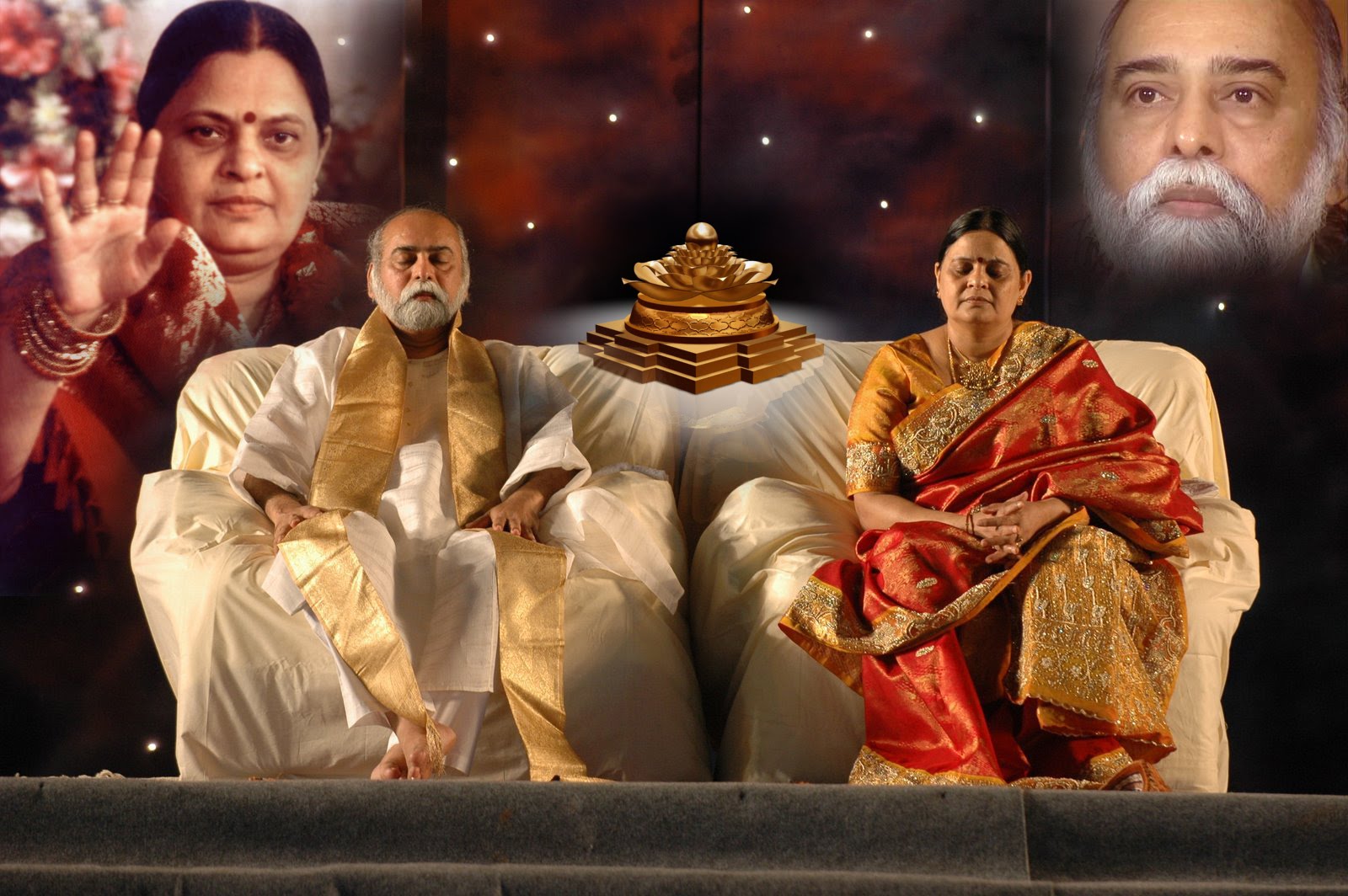




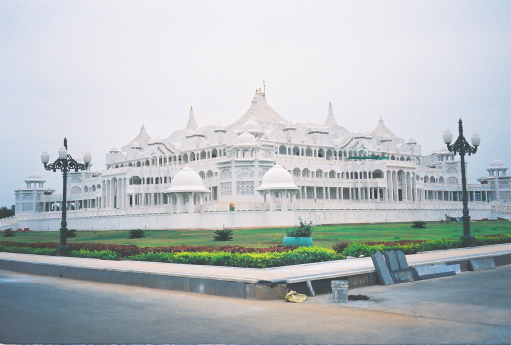
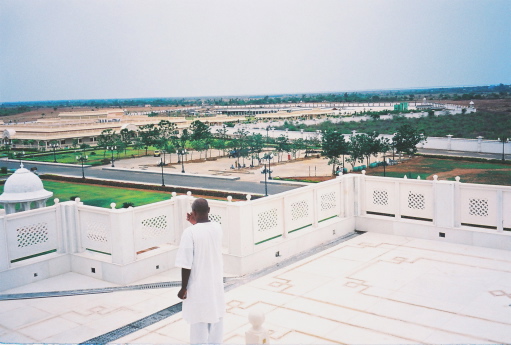
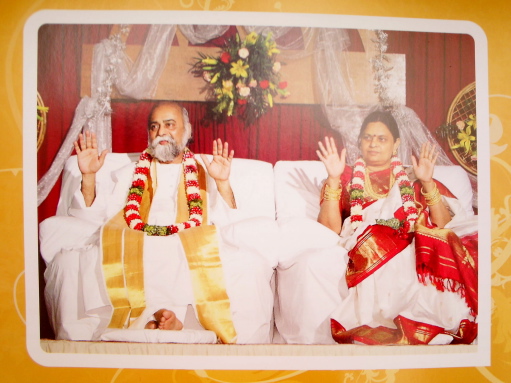
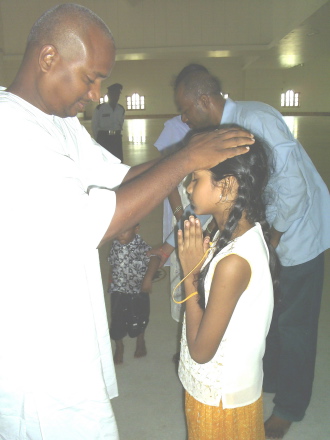
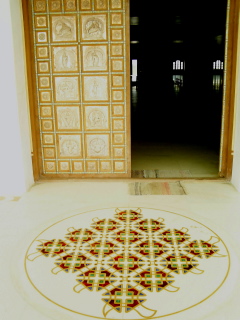
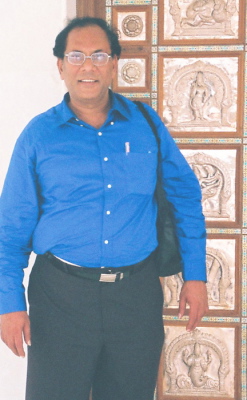

The mission statement
To usher in the Satyaguru, the Golden Age, nationally and globally, through a micro-level transformation of consciousness in the psyche of the individual, effected through intimate personal discoveryMore >>
The Kalki convenant
I am…the Supreme Creator, the Supremely Sacred, the Supreme immanent inner Controller of all that is, the immortal-I am Ishavara… With my coming, it is the dawn of the Golden AgeMore >>